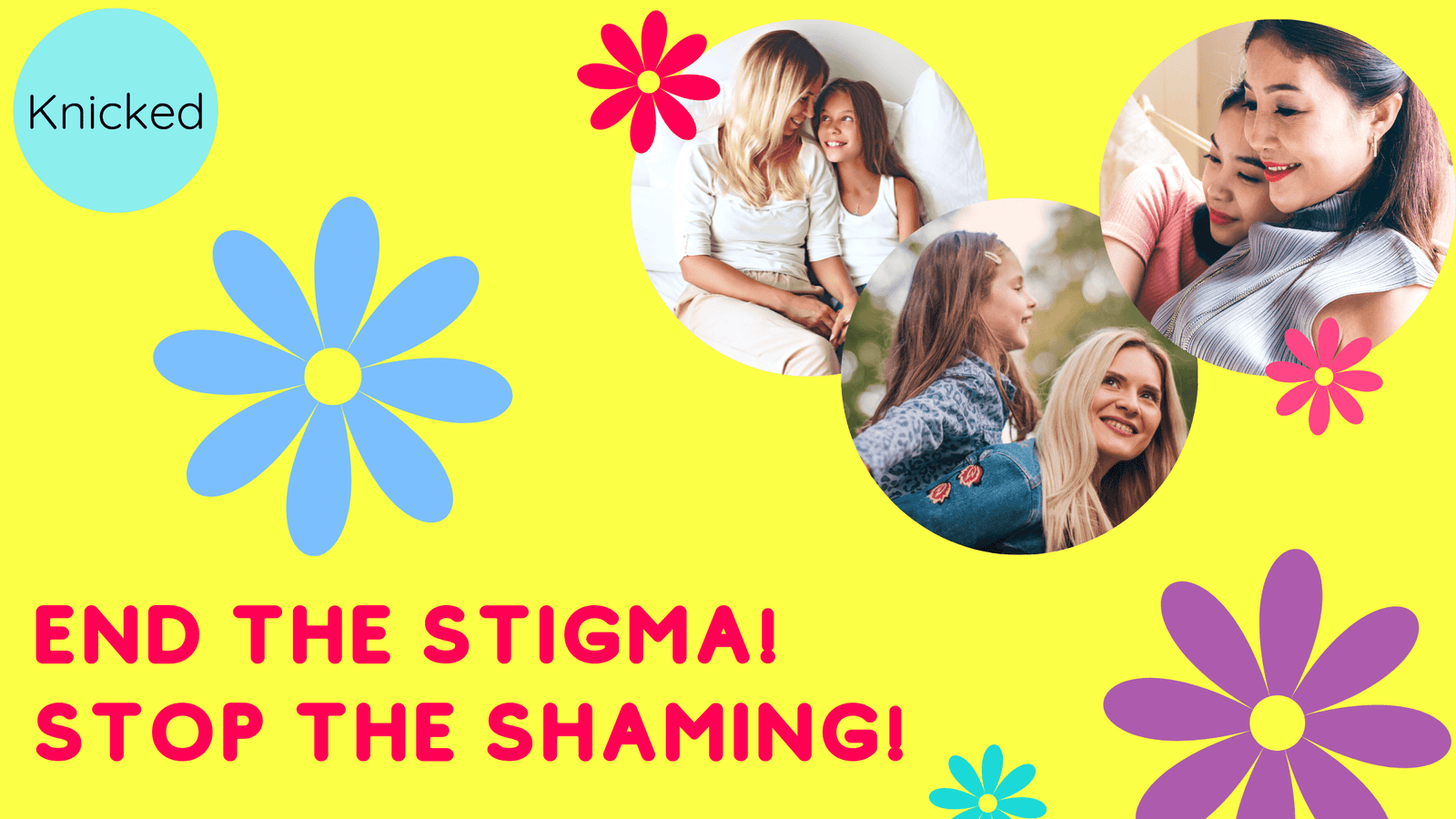While periods are great (crikey, without periods, where would the human race be?!) and are a natural parts of life, they can also be a major hindrance to everyday activities. Some of us are all too familiar with period pain, also known as dysmenorrhea. From sore breasts to headaches, or cramps that make us want to curl up into the foetal position and ignore the world, periods can be, at times, nothing short of a PAIN (yes, the pun!) for a lot of us. Especially for the first day or two of a cycle.
According to a period study reported on by The University of Sydney, 70% of menstruators said their period impacted their school, university or work attendance, including having to take one day off each month. Not only does this impact education or equality in the workplace (as many use their sick days for period pain, reducing the options they have when they’re actually sick), but period pain is not normal.
Let us repeat that:
Period pain is NOT normal!!
Yes, the odd discomfort of cramps and exhaustion is a natural part of periods, but if a period stops someone from being able to go to school, work, or participate in other daily activities, even for a day, there may be a bigger problem.
And yet we’ve all grown up thinking it’s perfectly normal to endure the pain and risk being set behind in other aspects of life as a result. What in the patriarchy??
As people with periods, or around people with periods (which is everyone!), we need to rewrite the narrative on period pain. And how, in history, has anything been changed? Education and open communication!

Let’s start with the first:
- What is period pain?
Period pain is caused by contractions from the uterus shedding its lining. We more commonly know these as cramps. These contractions are triggered by prostaglandins, chemicals the uterus makes that help regulate things like inflammation and pain. Higher levels of prostaglandins can lead to more intense contractions, resulting in greater discomfort.
- Why do some people get more period pain than others?
There are two types of period pain:
Primary Dysmenorrhea: This is the most common form, usually starting one to two days before menstruation and lasting for a few days. It is often linked to the natural hormonal changes in the body and tends to lessen with age or after childbirth. As mentioned above, people have different levels of prostaglandins so may feel more cramps than others until it eases when they get older. This form of period pain is normal.
Secondary Dysmenorrhea: This type is caused by underlying conditions, such as endometriosis, fibroids, or pelvic inflammatory disease. With secondary dysmenorrhea, the pain often starts earlier in the menstrual cycle and can last longer than primary dysmenorrhea, as well as being painful to the point of debilitation. This form of period pain is not normal.
- How do we know when our period pain is normal and when it isn’t?
The biggest indicator that period pain isn’t normal is the inability to go to school or work, especially if period pain isn’t relieved with over-the-counter pain relievers. Nausea and/or vomiting is also not normal. If any of these symptoms are accompanied by heavy menstrual bleeding, which is characterised by passing lumps of blood (or clots) that are larger than a 50 cent coin, having to change your pad/ tampon every hour, or your period underwear every few hours, and having to change your period product during the night.
Period pain is normal if the pain you feel is only on the first 2 days, doesn’t impact your daily life, and goes away when you use pain-relief medicine or hot and/or cold packs. (And yes, it is perfectly fine to take pain medication every month if it helps, one or two pills a month shouldn't harm us in any way (disclaimer, we are not medical professionals so please see your Doctor to discuss pain relief), and we deserve comfort!)

- How do we alleviate period pain?
As mentioned, if over-the-counter pain relief works, then use it! Nonsteroidal anti-inflammatory drugs (NSAIDs), like ibuprofen, can help reduce inflammation and relieve pain. This is because they indirectly reduce prostaglandin activity, reducing the contractions in our uterus and easing the pain we feel.
Another great pain alleviator is heat therapy. This is when you apply a heating pad or hot water bottle to the lower abdomen so it can relax muscles and ease cramping. This also helps with blood flow, as the warmer your body is, the runnier your blood, resulting in less clots.
As much as we may hate to admit it, exercise can also be a great period relief, improving circulation and reducing the severity of cramps. Also, it releases endorphins, lifting our mood. Next time you have your period, try yoga, pilates, swimming or walking and see if it helps!
Pain relief machines are also a great way to relieve period pain. Our ownperiod relief machine, MiniTENS+, which you can access here, has had amazing reviews, putting the pause on pain. This device is a transcutaneous electrical nerve stimulation (TENS) machine that provides painless electro currents that feel like gentle buzzing pulses to help relieve pain through the skin by reducing pain signals to the brain. It’s designed like a simple patch, making it portable and a drug free pain relief that helps with period pain and menstrual cramps, back pain, pelvic pain and more!

- What is the future of period pain?
We are now onto the second part of our narrative rewriting plan: open communication. One way this is being done at the moment is through a paid period leave debate, which could allow people up to 12 paid days off a year for their periods, or the option to work from home. But, given what we’ve just covered, is normalising this excessive pain even further the right call? Or is giving people options to adjust their lifestyle with their cycle what we should have been doing in the first place? It’s safe to say we have time to think about it and come to our own conclusions, so until then, here’s what you can be doing for the future of period pain:
Talk talk talk!
We’ve shared our thoughts on period pain, but you can read this to hear other people’s period stories, or click here to read Katrina’s endometriosis story.
Next, go to your Doctor or Gynaecologist to ensure you are as healthy as can be, and be courageous in telling them everything you feel. It can be helpful to record information about your periods (there are so many period tracking apps for you to try) so you can discuss them with your doctor, so spend a few months recording when you get your period, how long it lasts, how heavy it is and how it impacts your daily life.
Then, start sharing your story.
Open up the conversation with your friends, tell the young people around you, and connect with us on our socials to share your own stories there. The more people who talk about periods are making it easier for others to identify the abnormal symptoms and get help to increase the quality of their own lives.

Normalising period pain is by no means something we’ve started, but together, it’s something we can help end.
We’ve created a period tracker printable A4 pdf that you can save and print over and over as often as you wish. Just right mouse click to save if on a computer, or hold down your your finger and choose SAVE IMAGE if you’re on a phone or tablet. Then print!








